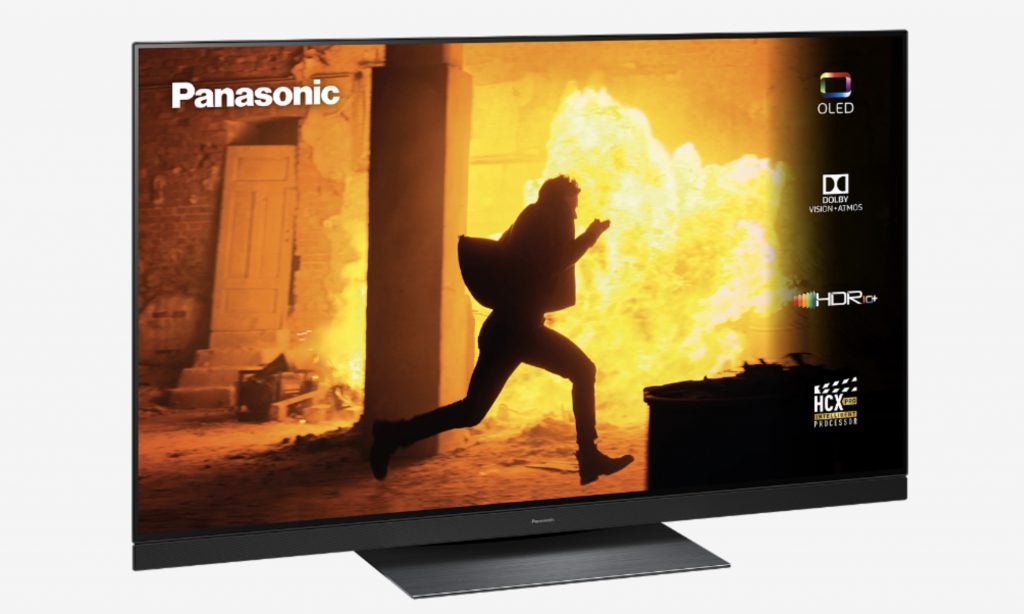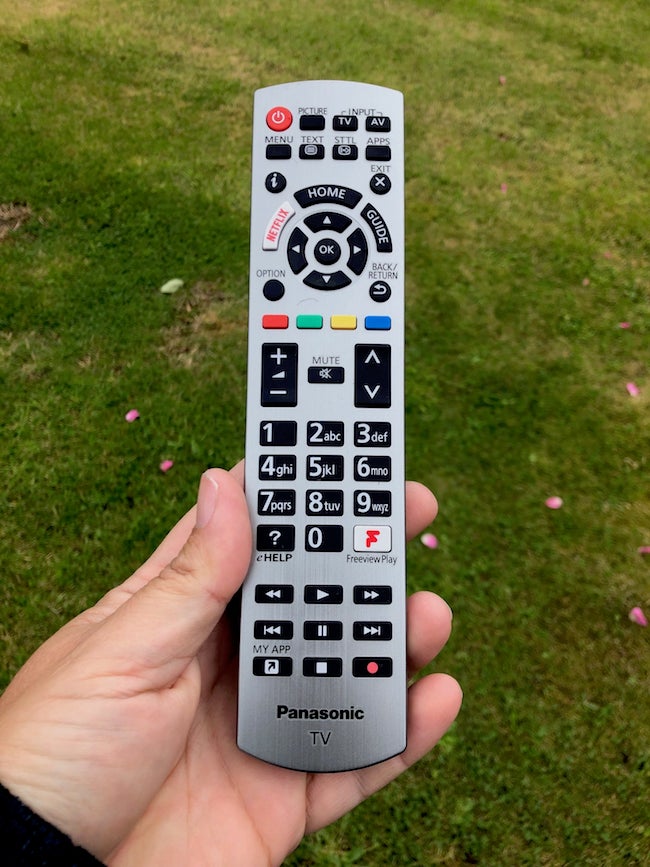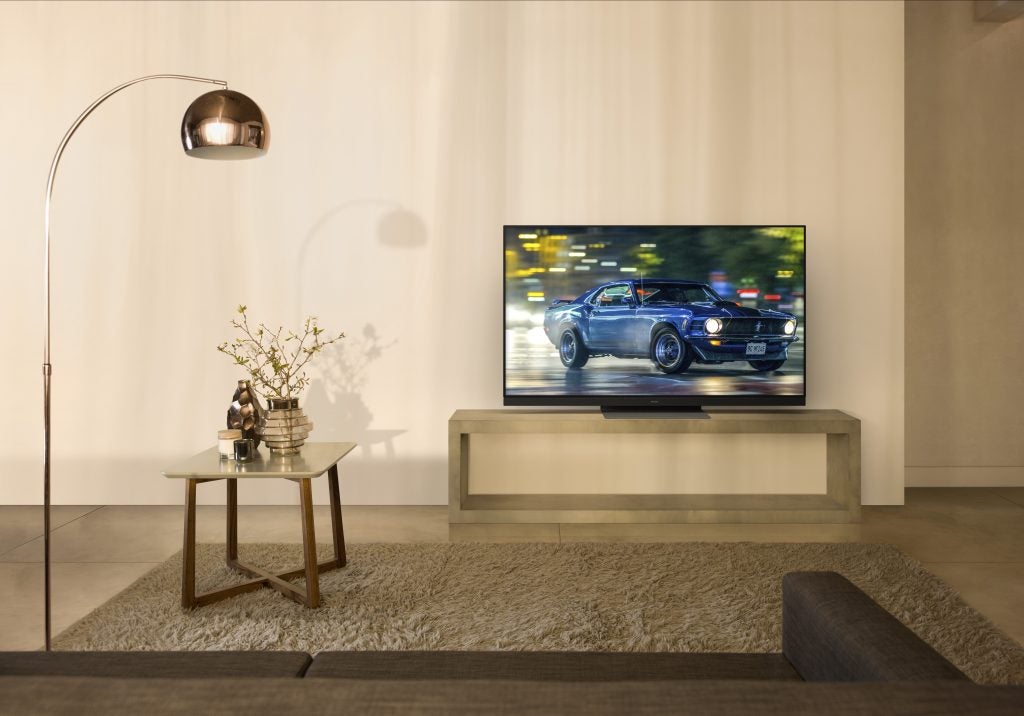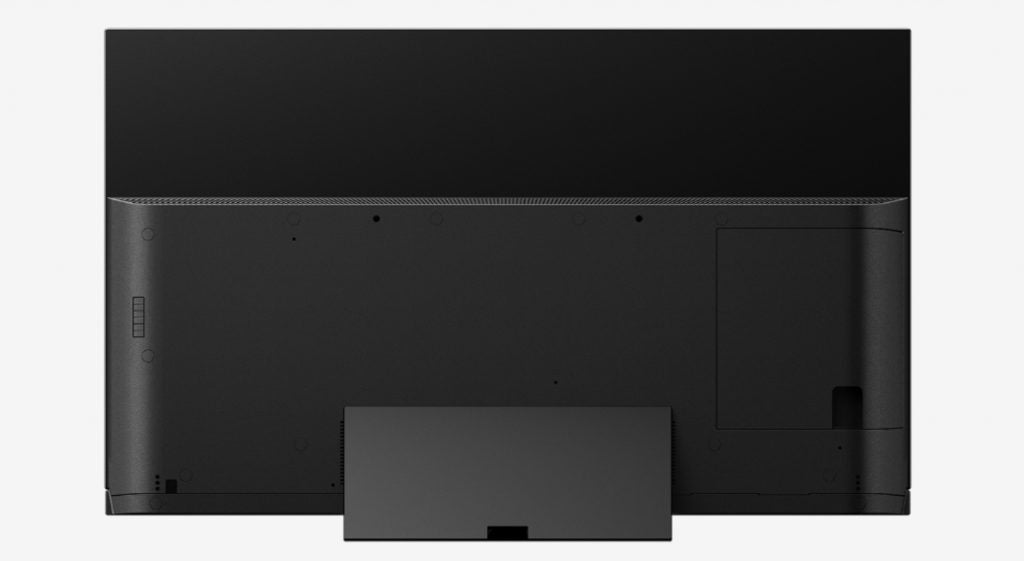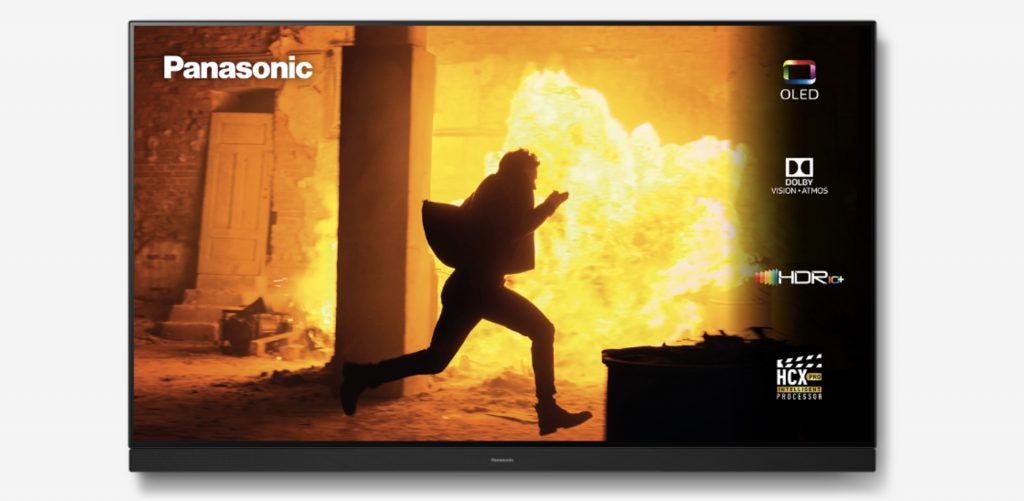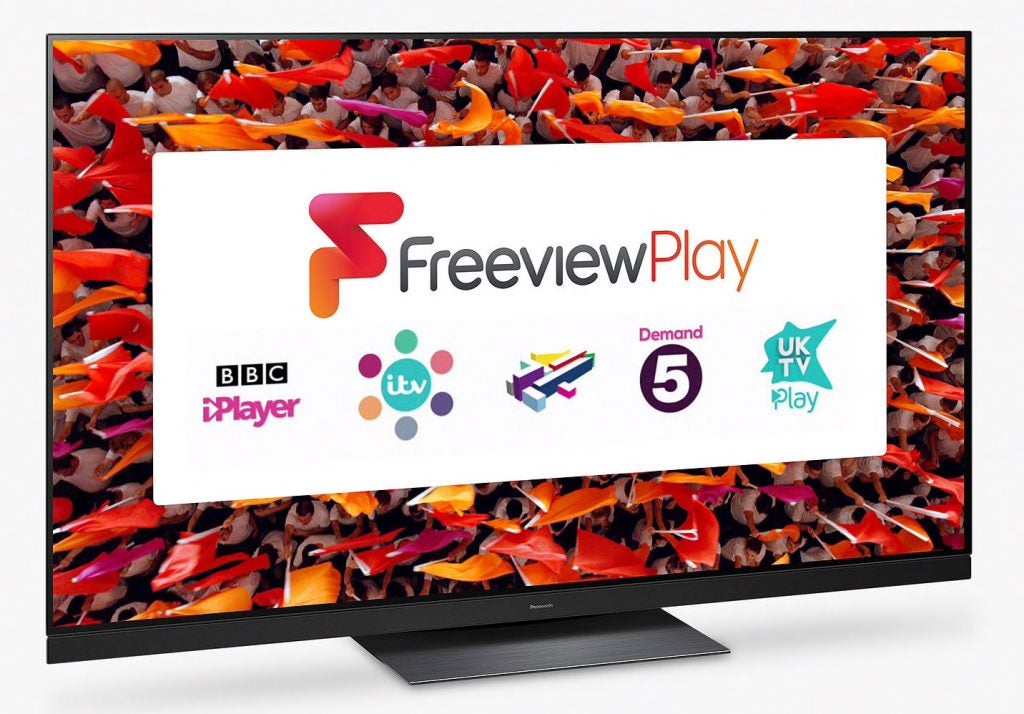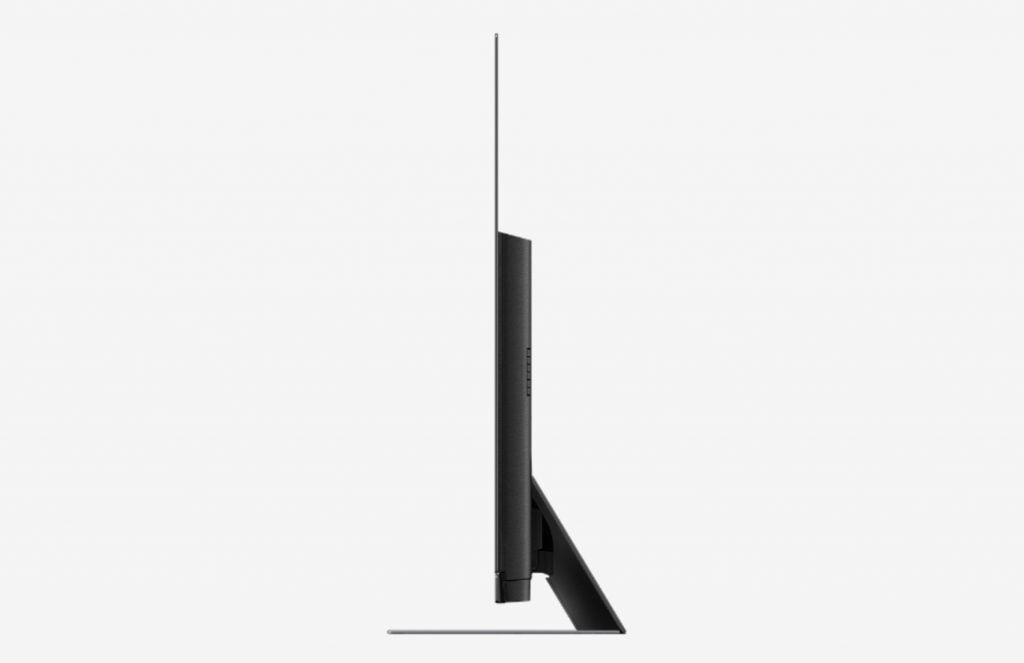Panasonic TX-55GZ1500 Review
Panasonic TX-55GZ1500 Review
Combines sensational picture quality with a potent sound system to fabulous effect

Verdict
The GZ1500 is a stellar television with fantastic picture quality and the new Blade speaker and Atmos sound processing do a good job of removing the need for a separate soundbar. While there are strong OLED rivals from LG and Philips, for picture subtlety and finesse the Panasonic GZ1500 puts down an impressive marker.
Pros
- Beautifully refined and detailed picture quality
- Strong sound from the Blade speaker
- Easy-to-use smart system
Cons
- Slight banding in HDR colour blends
- Occasional motion stutter
- Smart system is less sophisticated than some rivals
Key Specifications
- Review Price: £1999
- Native 4K resolution
- Dolby Atmos sound
- Built-in Blade soundbar
- HDR10, HLG, HDR10+, Dolby Vision HDR support
The Panasonic GZ1500s (55GZ1500 and 65GZ1500, both exclusive to John Lewis) are one step down from the top of Panasonic’s 2019 OLED TV range, sitting below the flagship GZ2000 series. This means you don’t get the new high-brightness panel technology found in the GZ2000s.
The GZ1500s do, however, combine the picture quality of Panasonic’s latest step-down OLED panels with a premium Blade speaker system designed to unleash the power of onboard Dolby Atmos decoding. And the results are stunning.
Related: Panasonic’s 2019 4K HDR and HD TV line-up explained
Panasonic TX-55GZ1500 design and build — While not the most handsome of OLEDs, the GZ1500 is still aesthetically pleasing
The GZ1500 isn’t the most overtly stylish OLED TV around. Both LG and Philips have delivered more overtly handsome and chic OLED designs this year. There’s still a certain refined and minimalist elegance to it, though.
The Panasonic GZ1500 has a relatively chunky bottom edge and deep rear compared to most OLED TVs. This is fairly easy to excuse, though, given that the lumpy bits house a startlingly powerful integrated sound system. Actually, given how much power and performance the GZ1500’s speakers deliver, it’s impressive that they don’t have more aesthetic impact.
Related: Best TV
The GZ1500’s build quality is good. The screen feels robust and premium, while the centrally mounted metal stand is almost excessively heavy duty.
The remote control provided with the GZ1500 is not as premium as the TV. Its finish looks vaguely metallic, but in truth it’s all fairly plasticky. Its buttons are large, but there an awful lot of them and the layout isn’t particularly logical. Panasonic has used the same layout for many generations now and it’s beginning to feel as though it might be time for a change.
Panasonic TX-55GZ1500 features — A very comprehensive set of smart, picture and audio options
The Panasonic GZ1500’s key attraction for AV fans will be its combination of OLED screen technology and the brand’s redoubtable “made in Hollywood” picture processing.
This processing still carries the same HCX Pro name Panasonic has used before, but it has apparently been improved to deliver even better near black and colour performance than Panasonic managed with its excellent 2018 OLED models.
As usual for Panasonic, the new processing know-how has been developed in conjunction with movie industry professionals at the Panasonic Hollywood Laboratory. In fact, the brand has partnered with renowned colourist Stefan Sonnenfeld to tune the GZ1500’s pictures, underlining just how far it is prepared to go to recreate the original artist’s intent.
Similarly, the GZ1500 carries a Netflix Certified picture setting, which, again, is provided with the express intention of reproducing Netflix content through settings that get as close as possible to those used when the content was mastered.
Panasonic has even gone to the lengths of getting the GZ1500 THX certified, meaning that its pictures have passed the barrage of exacting tests set by THX’s picture experts.
Related: Panasonic’s 2019 OLEDs designated as Netflix Recommended TVs
The most eye-catching feature of the GZ1500 when it comes to reproducing artistic intent, though, is its support for both the HDR10+ and Dolby Vision dynamic HDR formats.
Unlike the basic HDR10 HDR system, both HDR10+ and Dolby Vision content carries extra scene-by-scene picture information to help TVs reproduce HDR pictures better. The main result of this is noticeably more dynamic range (brighter light peaks, darker black levels) and, in Dolby Vision’s case, more precise colours.
Since different content from different studios and streaming platforms tends to use one or other of the dynamic HDR formats (if any) rather than both, it’s only TVs that support both formats, like the GZ1500, that can be guaranteed to get the best performance from every HDR source you watch. The only other brand in the UK supporting both HDR10+ and Dolby Vision right now is Philips.
Panasonic hasn’t just innovated on the picture front with its 2019 OLED TVs, it’s also introduced built-in Dolby Atmos support for the first time. And on the GZ1500 this Atmos decoding is backed by Panasonic’s latest Blade speaker.
Related: What is HDR10+?
The new Blade is the main difference between the GZ1500 range and the previously reviewed GZ1000 models. It’s substantially smaller than the Blade speaker introduced with last year’s Panasonic FZ950/FZ952 models, enabling it to integrate easily onto the bottom of the screen rather than sitting separately, as with the FZ950s.
Despite being so compact, though, the GZ1500’s speaker system still manages 50W of power in a 2x10W and 2x15W configuration. It includes forward-facing speakers, too, which can usually be relied on to deliver a more direct and involving soundstage.
The GZ1500’s smarts come courtesy of Panasonic’s own My Home Screen 4.0 platform. This isn’t the most sophisticated or content-rich smart platform around. But it is very easy to use and customise, and carries most of the apps UK viewers would want, including Netflix, Amazon Prime Video, YouTube and Freeview Play – the latter providing a handy portal to all of the UK’s main terrestrial broadcaster catch-up apps.
Panasonic has added support for both Amazon Alexa and Google Assistant voice control, too. You’ll need an external Amazon or Google listening device to make voice control work, though, as there’s no built-in listening functionality.
The Panasonic GZ1500’s connections include the expected four HDMis, three USBs for multimedia playback and HDD recording, and both Wi-Fi and Bluetooth wireless support.
The HDMIs aren’t built to the latest v2.1 standard like those on LG’s latest OLED TVs, and don’t support the eARC functionality required to ship uncompressed Dolby Atmos and DTS:X sound to an external audio system. They do, however, support HDMI 2.1’s automatic game switching and variable refresh rate features with Xbox One S and X consoles.
Panasonic TX-55GZ1500 set-up — Plenty of options to tweak the picture as the viewer sees fit
Although it prides itself on the potential accuracy of its pictures, the Panasonic GZ1500 also – happily, I’d say – provides lots of flexibility around exactly how pictures look. The huge list of picture presets covers everything from ultra-colourful, punchy pictures in Dynamic mode to Hollywood-tuned accuracy with its Cinema and THX settings.
Personally I found the all-round most exciting pictures, which were also balanced and natural, came with the Normal preset (especially in typical living room light conditions), though for dark room viewing you could also try the Cinema setting. I found the True Cinema mode a little dark and restrained this time round.
The main rule with regard to other GZ1500 settings is moderation. So I’d say leave noise reduction off for all 4K sources, and only on a low setting for sub-4K sources. In fact, arguably, you still don’t need to use it at all for good quality HD sources like Blu-rays.
Panasonic’s IFC motion compensation system is best left on its low setting or, actually, off entirely. Certainly when it’s off you’re slightly less likely to notice a slight stuttering issue the TV occasionally exhibits.
One interesting feature I’d suggest experimenting with is Panasonic’s Rec.2020 Colour Remaster option. This causes a stronger colour lift than I remember it producing with previous Panasonic generations, but I’d say it’s well worth leaving on for most of the time – especially when you’re watching in the screen’s Normal preset.
Related: OLED vs QLED – Television technology’s battle royale
Panasonic TX-55GZ1500 performance — Fantastic picture quality and impressive sound
The combination of Panasonic’s relationship with Hollywood creatives and its heritage with OLED-like plasma technology is really starting to pay off now. Or, to put it more succinctly, the GZ1500’s picture quality is fantastic.
Its contrast is particularly sensational. Beautifully crisp, pure, and intense bright points and objects appear almost magically right alongside spectacularly deep and remarkably refined dark areas. There’s seemingly no compromise whatsoever between the two, even when they’re just a pixel apart.
This peerless delivery of OLED’s biggest strength as a screen technology is partnered with the best near-black light management I’ve seen on any OLED TV. While OLED TVs excel at delivering black colours, one of their biggest challenges is avoiding noise, greyness and banding when they’re trying to show details and colours at just above black. The GZ1500 dodges all of those near-black bullets with aplomb, though, delivering seemingly immaculate greyscale and light management all the way from full black to peak white, with no hint of black crush in dark areas, noise, or any lack of finesse in subtle tone gradations even in the darkest corners.
The impact this has on both dark scenes and those with a mix of bright and dark content cannot be overstated. Everything looks effortlessly natural, richer in depth and texture, and often just achingly beautiful.
It’s also a huge relief to find the Panasonic GZ1500’s near-black control helping it largely avoid the exaggerated MPEG noise other OLED TVs are currently exhibiting with some streamed sources. And there isn’t much evidence of OLED’s common flashing effect (generally referred to as “chroma overshoot”) during subtle dark colour transitions
Panasonic is not, to be clear, doing anything differently with the GZ1500’s panel to achieve these dark scene strengths. It’s all down to how the latest HCX Pro Intelligent processor drives the panel. Which is where, it seems, Panasonic’s combination of plasma experience and heritage with producing pro-grade mastering monitors seems to be yielding spectacular dividends.
The GZ1500’s colours are mostly stunning, too. Panasonic has managed to inject HDR scenes with more consistent brightness (even though the panel still peaks at between 700 and 770 nits of brightness on a 10% white HDR window, depending on which picture preset you’re using). This means colours typically enjoy more volume and richness than they did on 2018’s images.
At the same time, the GZ1500’s improved near-black performance means it handles dark colours brilliantly, holding on to their naturalism and subtle differences all the way down to true black.
The refinement at work in the GZ1500’s contrast and colour reproduction unlocks the impact of 4K resolution like no previous Panasonic TV. High quality 4K sources look spectacularly detailed and full of texture and three-dimensionality. Mostly good motion handling keeps the detailing high during action scenes or sports coverage, too.
The HCX Pro processor also displays plenty of quality when it comes to upscaling HD and even SD sources to the screen’s native 4K resolution. It’s exceptionally good at spotting the difference between “true” picture information and compression, fizzing or chroma noise in low-resolution sources, so that it only upgrades the image content you want to see upgraded, and not the stuff you don’t.
Viewing angles, as usual with OLED TVs, are excellent, with really no contrast or colour reduction taking place even if you’re watching the TV from almost right angles. One or two premium LCD TVs have started to tackle LCD’s traditional viewing angle problems, but they still can’t deliver as wide viewing angles as the GZ1500 without involving some picture compromise.
Related: What is Freeview Play?
The Panasonic GZ1500’s HCX Pro processor does an excellent job of working out how to make basic HDR10 sources – as well as the broadcast HLG format and, uniquely, the HLG Photo format – look great. Its precision performance still achieves its ultimate results, though, when you can feed it HDR10+ and Dolby Vision sources.
Panasonic used to be rather sceptical about the idea of dynamic HDR formats. But I’d say the extra scene-by-scene data provided at the mastering stage with HDR10+ and Dolby Vision fits perfectly with both the GZ1500’s desire to get as close as possible to artistic intent, and its inherently refined picture approach.
Finding negative things to say about the Panasonic GZ1500’s picture is a challenge, but I’ve managed to find a couple! Firstly, there can sometimes be a fractional pause in the image when there’s motion in the frame. Especially if the motion involves a zoom in or out. Oddly, the Intelligent Frame Creation system exaggerates rather than removes this.
Secondly, I occasionally spotted gentle traces of colour banding with HDR sources. This was only seldom strong enough to be truly distracting, but it was more apparent at times than it is with some rival OLED screens. And it seems oddly out of place against the exceptional refinement Panasonic has achieved elsewhere.
I guess it should also be pointed out that, as ever, even though the GZ1500 runs notably brighter on average than 2018 Panasonic OLEDs, its peak brightness levels still fall substantially short of those achieved by the best LCD TVs. So there’s a limit to how much of HDR’s potential light range it can show. However, not even the best LCD TV can rival the local contrast – right down to pixel level – delivered by the Panasonic OLED.
The Panasonic GZ1500’s Blade speaker sounds impressive considering how little impact its forward-facing drivers have on the TV’s aesthetics. The soundstage the speakers create, for instance, is wide and high enough, and delivered with enough effects, accuracy and dynamics to present at least some of the immersive impact Dolby Atmos is renowned for.
Related: Dolby Vision HDR – What you need to know
The speakers are powerful and open enough to swell and ebb along with potent movie soundtracks, rather than flatlining or succumbing to distortions and drop-outs.
The forward-facing drivers propel the sound right into your living room, too, rather than leaving it feeling indirect and vague. This proves especially helpful with vocals, which always sound clear, natural and positioned at the heart of the mix rather than vague and misplaced.
There’s a limit to how deep the Blade’s bass levels can go. But at least what bass there is doesn’t sound compressed or boxed in. Plus the GZ1500 lets you add an external subwoofer if you feel the need to flesh the bass out.
Related: What is Dolby Atmos?
Should I buy a Panasonic 55GZ1500?
The Panasonic GZ1500 is a stellar television. Its picture quality is fantastic in almost every way and with every source, while the new Blade speaker and Dolby Atmos sound processing do a good job of removing the need for a separate soundbar.
If you actually want a separate soundbar or have some other kind of external sound system then you could get the Panasonic GZ1000 instead. At the time of writing, however, the 55GZ1000 and 55GZ1500 cost practically the same, so it seems to me that you might as well get the better-sounding model.
More compelling competition might come from Panasonic’s upcoming GZ2000 OLED TVs. These introduce new OLED panel technology to deliver more brightness than any other OLED TV to date. And while we haven’t yet been able to test one, previews suggest that the results of this new panel technology might be truly spectacular. Unfortunately, though, you’ll have to find £1300 extra to secure the 55GZ2000’s charms.
Finally, there are strong OLED rivals from LG (especially the OLED55C9) and Philips (the 55OLED804). Both of these have their own attractions: lovely designs and an excellent smart system in LG’s case; Ambilight, aggressive pricing, and unusually bold HDR by OLED standards in Philips’ case. For sheer picture subtlety and finesse, though, the Panasonic GZ1500 is the one to beat.
How we test televisions
We test every TV we review thoroughly over an extended period of time. We use industry standard tests to compare features properly. We’ll always tell you what we find. We never, ever, accept money to review a product.

